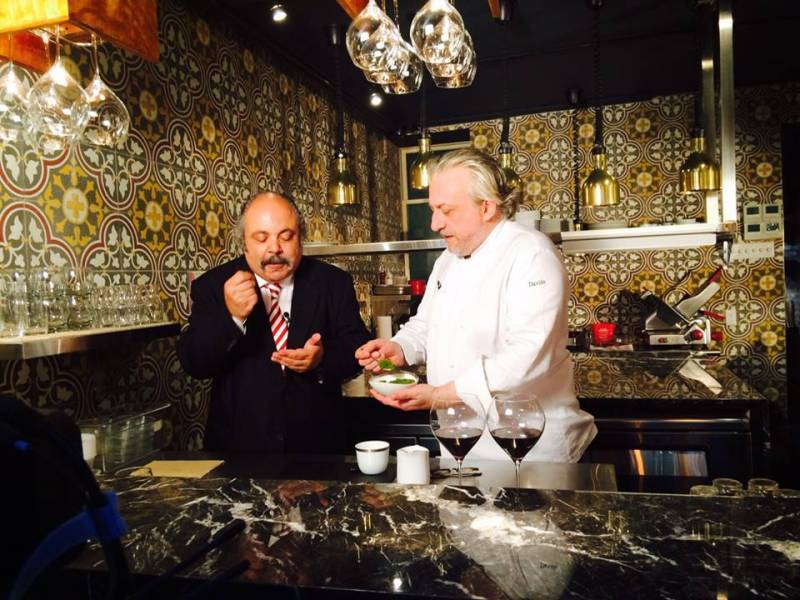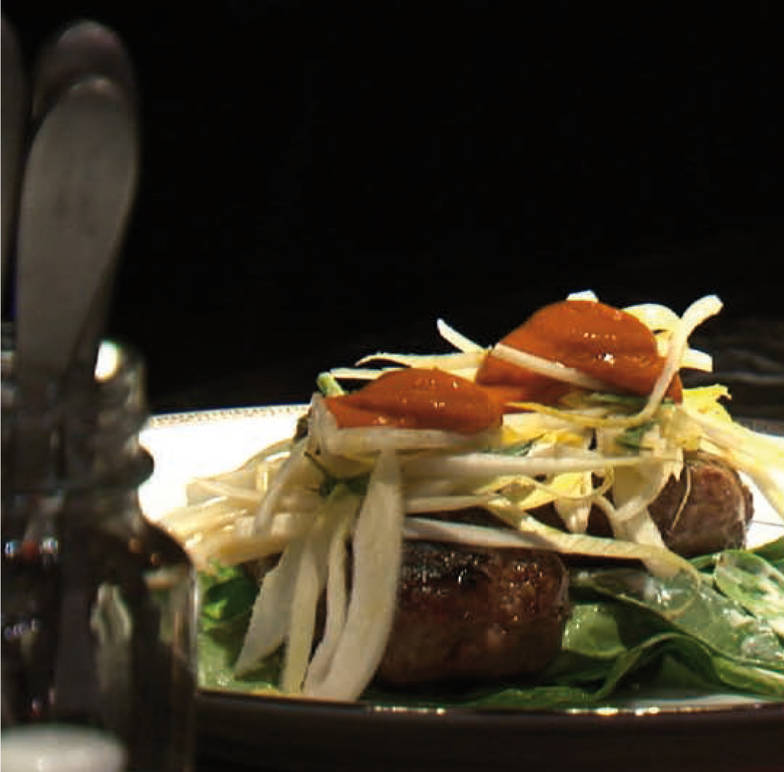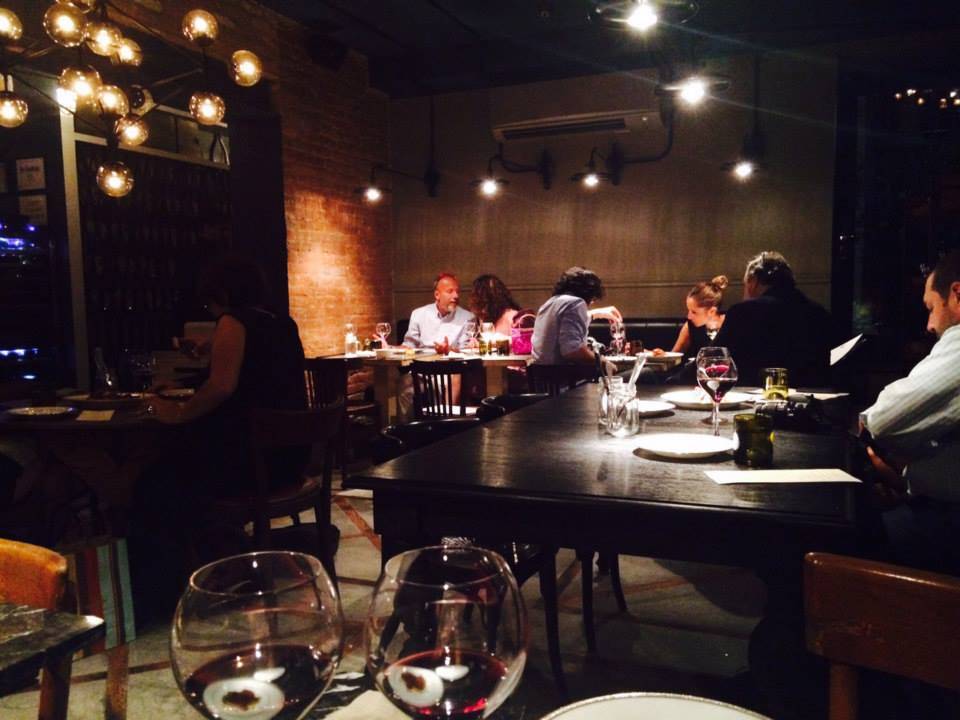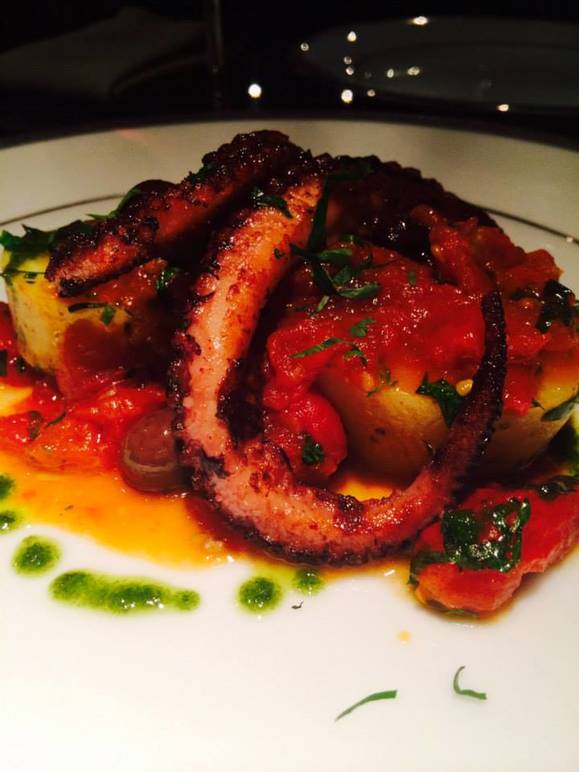An Odd Couple in a "Wine Mill"
When people come back to the city after they have been away, whether to Italy or the beach or even Brooklyn Heights, they come looking for a new experience, to find out what sprang up in New York while they were away. The same happened to me a few months ago.
I learned about a restaurant called Mulino a Vino (an odd expression that translates as ‘Wine
Mill’).
The new chef, Davide Scabin, comes from Piedmont, in the northwest of Italy, and I understand he is doing things here that are different even in the great world of Italian cuisine.
Indeed, as soon as it opened, the place caused a stir. So I had to go find out why.
Which comes first, food or wine?
Davide, is it true that the concept of your restaurant is to start with the wine and then work your way to the food?
This was Paolo Meregalli’s idea. He’s the owner of Mulino a Vino and he came up with the idea of choosing the wine first and then getting to the food.
Paolo is a wine importer in the US, so he has access to a wide choice of wines. Mulino a Vino is special, in that we already have 50 labels available to drink by the glass made from grapes that aren’t commonly used in Italy.
For example, Schiava, is not a typical Italian wine… But we also serve important and well known Italian wines like Barolo, Tignanello, the must-haves.
Did you first pick the wines and then tailor the menu accordingly?
Let’s say that the two things influence each other. Sometimes I started off by designing dishes that eventually didn’t turn out the way I expected, so they weren’t included in the menu… and we tried to match the wines meant to be paired with those dishes with other recipes or else just discontinued them. The idea took shape like this, without necessarily assigning priorities. We had basic concepts for both wine and food and then, as in any marriage, there was a trial stage.
So it’s a bit like opera: the wine is the music, and the food is the words, or vice versa... Would you say that you can either combine one wine with many dishes or match a different glass of wine for every recipe?
We have a great peculiarity in our restaurant: All wines served by the glass have been poured using the Coravin to ensure the exact same quality that you’d get from a bottle that’s just been uncorked. Then we offer the option of small portions so that customers can make their own “tailor-made” choice. This way you can try many different dishes without spending a fortune, and you can have the right wine for each one!
Cooking: Art or Science?
Speaking about opera made me think of the relationship between cooking and art… What do you think?
Art is an important component in cooking, but the bottom line is that we are still talking about chemistry and physics—with, let’s say, an artistic touch. So there is some science here… I know many food lovers are afraid of this word because they think the dishes are scientific rather than ‘cooked up’ by the chef…
I tend to be scientific, but I also make sure I can express the soul of the dish. The chef’s job is to turn the dish into something less scientific. For me every recipe is a project to first put down on paper. There is an initial idea that needs to take shape, and then there are tests to be done to get exactly what you had in mind.
This codification is in itself a scientific process. It’s what a “nonna” does, except she does it automatically. She has learned it over the years, she has memorized it, she has been raised doing it. These days we can’t afford it anymore, and we also need to replicate exactly the same dish for many people. A nonna has the love needed to perform the ritual of cooking. And following a ritual also means following a scientific method, because you always repeat the steps.
Do chefs follow a ritual too?
The chef needs to follow a ritual in order to always produce the same food. Unless there is a codified model your food project becomes … a performance…which may or may not turn out well.
Speaking of ingredients and measurements, that’s also a mix of science and art isn’t it?
Absolutely. Take this powder, for example. This is pesto, though you wouldn’t say so at a first glance. It is actually a pesto powder that I produced on the occasion of the space mission of Luca Parmitano, the Italian astronaut who went on the ISS. I had the honor to prepare five meals for him to take into space as personal anti-stress equipment. All you have here is the six—not seven—official ingredients for the world champion of pesto.
Is the missing ingredient oil?
No, it’s salt. Everything else is there. It’s the original recipe. And bear in mind that this product was made a year and a half ago. Now, with the exact rehydration dose of water (all it needs is water, nothing else) I can bring it to life. By stirring it you create a sort of emulsion, because the oil is there, even the color changes, it shines again. Smell it. Taste it. Don’t worry, nothing bad will happen to you. What do you think?
Unbelievable! I would only add more garlic—if I go to space, who am I going to kiss? It doesn’t matter, so I would like more garlic.
How Italian should it be?
Wrapping things up: what is your view of Italian authenticity? Is everything you make absolutely authentic?
I’ll be honest. Some plates I studied to give an Italian flavor that also catches the eye of Americans and New Yorkers. Take this ravioli. You’d call it a “plin piemontese.” Outside there’s the crunchy skin of chicken, but this mozzarella cream looks like mac & cheese, if you will. Here we used fried chicken but it’s shaped like a plin. So, is it Italian? The dish doesn’t exist in Italy. Not in Piedmont, anyway. But it’s made with chicken! So I made it for New Yorkers. With an Italian flavor.
Whatever you think it is, I’ve got to say, it’s delicious! And it goes well with this Aglianico del Vulture, one of the best red wines in Italy produced in the South, in Basilicata, but it could work with white, something like a Pinot Bianco, from the Northeast.
Excellent! Congratulations!











































i-Italy
Facebook
Google+
This work may not be reproduced, in whole or in part, without prior written permission.
Questo lavoro non può essere riprodotto, in tutto o in parte, senza permesso scritto.